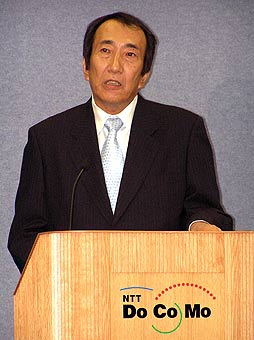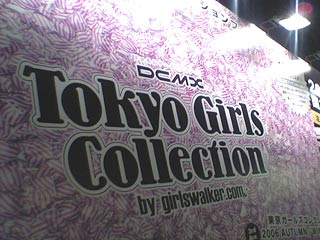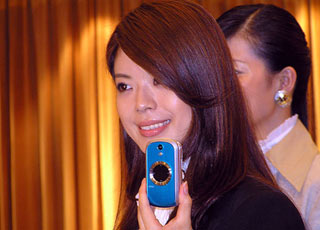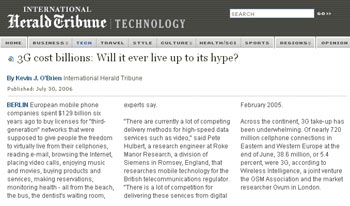Number Portability – DoCoMo Relying on Napster Japan
 Despite the resounding silence from DoCoMo’s website, Tower Records (part-owned by DoCoMo) have just introduced a joint-venture service with Napster in Japan. The Tower Records Japan-Napster JV will provide music distribution services for PC and mobile from an initial catalogue of 1.5 million songs. The initial service launch only allows content purchased by premium subscribers – a subscription costs 1,980 JPY per month – to be moved from the PC to mobile devices – and at this time only one handset (F902is) is supported.
Despite the resounding silence from DoCoMo’s website, Tower Records (part-owned by DoCoMo) have just introduced a joint-venture service with Napster in Japan. The Tower Records Japan-Napster JV will provide music distribution services for PC and mobile from an initial catalogue of 1.5 million songs. The initial service launch only allows content purchased by premium subscribers – a subscription costs 1,980 JPY per month – to be moved from the PC to mobile devices – and at this time only one handset (F902is) is supported.
DoCoMo took a 42 percent share of Tower Records here in November 2005 and – if the on-scene hype at DoCoMo’s booth at this week’s CEATEC consumer electronics show is any guide – they appear ready to announce a more aggressive mobile music device line-up in the coming weeks.
The Tower Records initiative appears not unrelated to DoCoMo’s overall mobile music strategy, which has so far run a distant second to mobile market leader KDDI/au.
Since 2002, KDDI have seen strong traffic, sales and handset popularity with their Chaku Uta, Chaku Uta Full, and Chaku Motion full-track audio and video offering. More recently, their new ‘LISMO’ unified PC/mobile content download and syncing service has started to gain customers, while DoCoMo have only this year in June started pushing Chaku Uta Full.


 The long summer silence from SoftBank on the rebranding of Vodafone K.K. to SoftBank Mobile is over with no less than
The long summer silence from SoftBank on the rebranding of Vodafone K.K. to SoftBank Mobile is over with no less than  WWJ has spotted the first presence of NTT DoCoMo’s ‘DCMX’ mobile credit (card) service on the streets of Tokyo and, once again, the future has arrived. Lawrence Cosh-Ishii, WWJ’s director of digital media, en route to a central Tokyo video shoot a few days ago, spied the first street-level advert for retail goods payable via DCMX (image at right).
WWJ has spotted the first presence of NTT DoCoMo’s ‘DCMX’ mobile credit (card) service on the streets of Tokyo and, once again, the future has arrived. Lawrence Cosh-Ishii, WWJ’s director of digital media, en route to a central Tokyo video shoot a few days ago, spied the first street-level advert for retail goods payable via DCMX (image at right). KDDI today launched the first strike in Japan’s mobile number portability wars with no less than
KDDI today launched the first strike in Japan’s mobile number portability wars with no less than 
 The International Herald Tribune ran a couple of gloomy 3G-related articles last week (see “3G cost billions: Will it ever live up to its hype?” and “Operators in Asia learn from mistakes”). It’s the height of the summer vacation slow-news cycle, and maybe the IHT was just fishing for some headline attention, but we couldn’t let these egregiously faulty items pass without comment.
The International Herald Tribune ran a couple of gloomy 3G-related articles last week (see “3G cost billions: Will it ever live up to its hype?” and “Operators in Asia learn from mistakes”). It’s the height of the summer vacation slow-news cycle, and maybe the IHT was just fishing for some headline attention, but we couldn’t let these egregiously faulty items pass without comment.